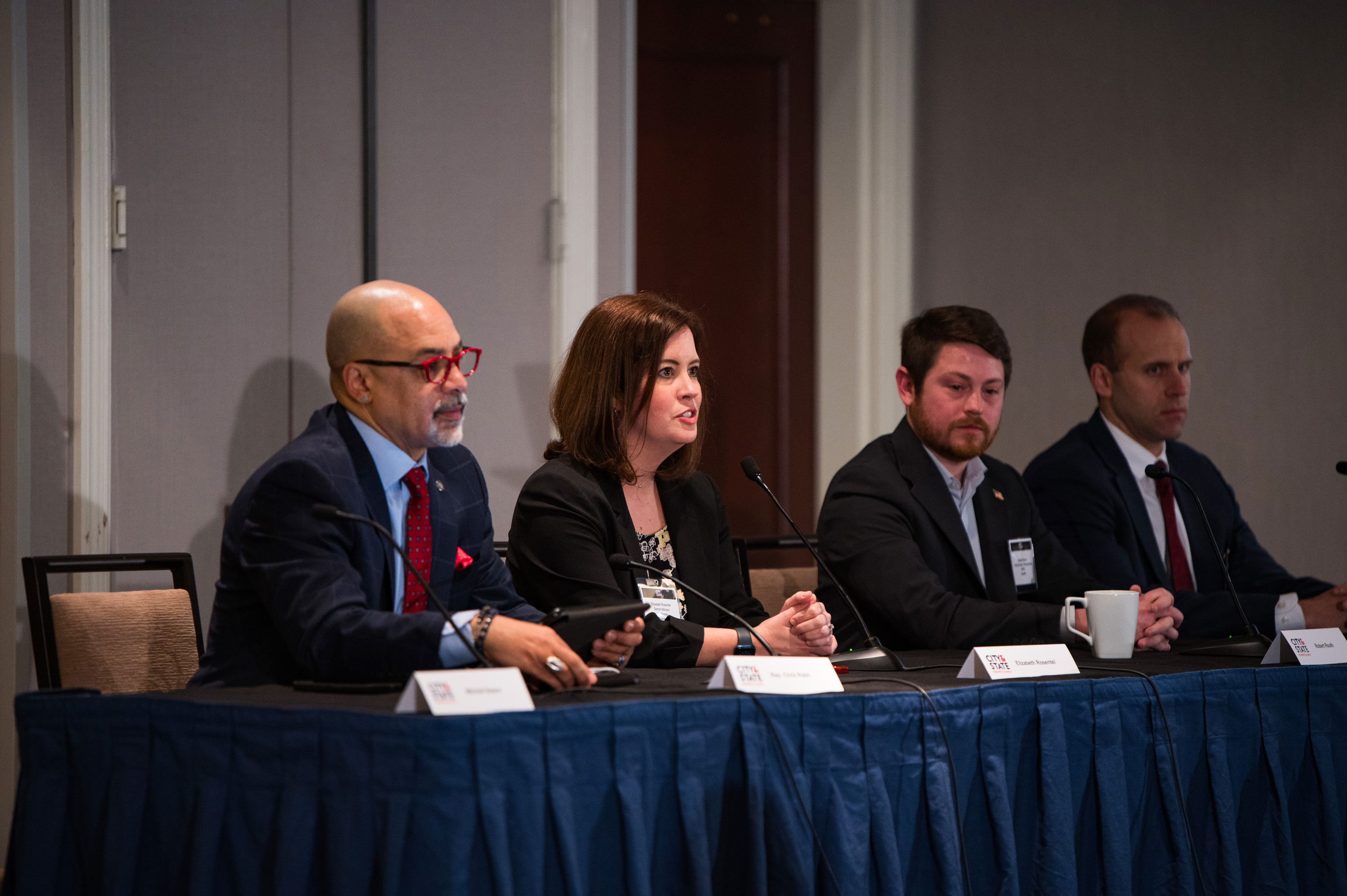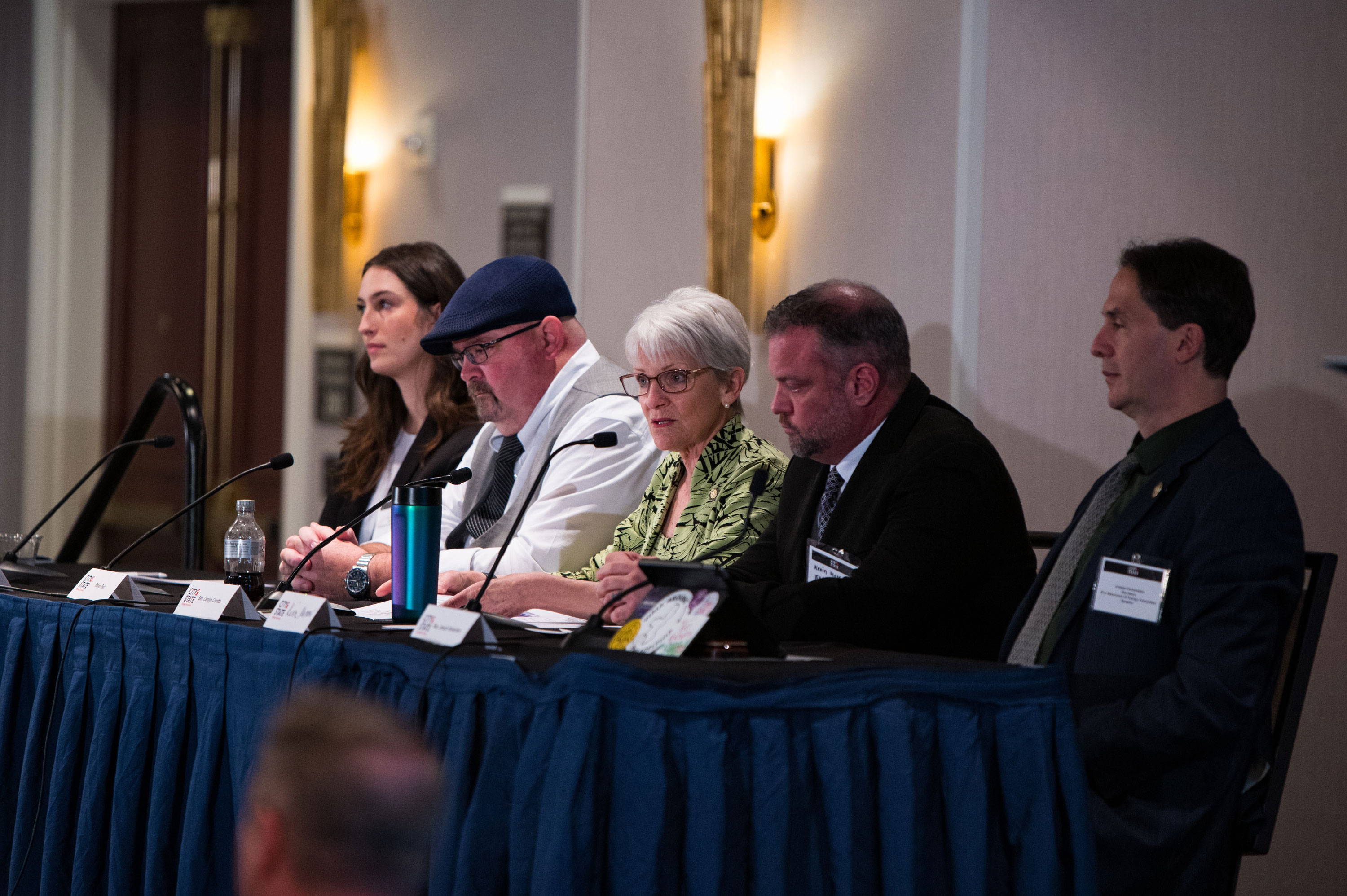Events
‘We can move the needle’: Leaders converge in Harrisburg for 2024 PA Energy Summit
Lawmakers, labor leaders and energy industry stakeholders met for the half-day conference.

MR Gruber Photography
Power players from across the commonwealth convened for a morning of networking and policy discussions at City & State’s 2024 Pennsylvania Energy Summit, a half-day conference that explored Pennsylvania’s role in an evolving energy landscape.
The event featured conversations about ongoing efforts to try to regulate carbon emissions from the power generation sector, how to improve electric grid resiliency and how to harness the economic and job opportunities that come with new developments in the energy sector.
The summit included participants from across various levels of government, as well as stakeholders from the private sector, organized labor and government relations.
It offered a timely look at pressing issues in the energy space, coming a month after Gov. Josh Shapiro, a Democrat, introduced a two-part energy proposal seeking to cap carbon emissions from the power sector and increase the percentage of clean energy produced in the state to 35% by 2035.

Photo credit: MR Gruber Photography
Adam Ortiz, the Mid-Atlantic regional administrator for the U.S. Environmental Protection Agency, gave keynote remarks and highlighted federal resources available to assist states and communities with pollution reduction efforts through the $27 billion Greenhouse Gas Reduction Fund, created through President Joe Biden’s signature Inflation Reduction Act.
Ortiz said the EPA’s role has expanded over the years, and noted that the agency provides support for energy-related projects through grant programs and other initiatives. “We’re here to accelerate your work. We’re here to give you a boost – and that’s a very different role (than the) EPA has had historically,” he said.
Ortiz said the Biden administration is working hard to make much-needed infrastructure improvements and encourage the transition to clean energy sources and technologies.
The day’s first panel discussion focused on the importance of energy literacy, whether the state should regulate carbon emissions from the power sector and ways to modernize energy infrastructure. The panelists were state Rep. Chris Rabb, Philadelphia Energy Authority Chair Mitchell Swann, NRDC Pennsylvania Policy Director Robert Routh, Mark Schneider, president, East Region at Cordia and Elizabeth A. Rosentel, senior adviser, government relations at Buchanan.

Photo credit: MR Gruber Photography
Rabb said Pennsylvania is starting to move in the right direction on energy policy, but noted that the state needs to take a holistic, intersectional approach. “We’re beginning to have the right conversations, but we need to do a lot better,” he said, adding that future energy policies need to take climate change, the economy and jobs, grid capacity and environmental justice communities into account. “We have to talk about this based on the unique energy profile of our commonwealth,” he said.
On the topic of modernizing energy infrastructure, Rosentel said increased communication and collaboration between all levels of government is necessary to make sure that evolving consumer demands can be met, especially as electric grids face capacity issues. She said consumers have a “level of expectation” that the lights will turn on, and with electric vehicles becoming more popular, stakeholders need to stay focused on the grid’s capacity. “To make all these things happen, you need coordination among the state agencies,” she said.
The day’s second panel featured a mix of government officials, including state Sen. Carolyn Comitta, state Rep. Joe Hohenstein and Autumn Anderson, the deputy director of critical investments for Gov. Josh Shapiro’s office.
Labor leaders, including Robert S. Bair, president of the Pennsylvania State Building and Construction Trades Council, and Kevin Morrow, the organizing director for the Eastern Atlantic State Regional Council of Carpenters, also participated in the panel.

Photo credit: MR Gruber Photography
Anderson said the governor’s Office of Critical Investments is responsible for coordinating the distribution of federal funding between several state agencies. “We work with agencies to identify transformative projects and to bring some of those diverse stakeholder groups that we work with to the table,” Anderson said. “We work with a lot of nonprofits, the private sector, local governments and (talk) about a lot of different transformative projects that could occur around the state.”
Bair touted the skills and advantages of union labor in the energy industry and said the state needs to be realistic about the future of energy in the commonwealth, stressing that natural gas and hydrogen need to be part of the state’s energy transition toward cleaner sources. “There’s nothing we can't do in the energy industry right now in Pennsylvania, and there’s nobody you can’t train to do it. It’s a matter of: Are we going to be realistic in our expectations of what the energy future of PA looks like?” Bair said
“We can move the needle in the short term by utilizing the resources underneath our feet smartly, and create jobs while we’re doing it, but it takes a very hard conversation,” he added.
Comitta, the minority chair of the Senate Environmental Resources & Energy Committee, said that despite the challenges and hard conversations around energy policy, she has an optimistic view of the sector's future.
“I think our energy future in Pennsylvania is very bright,” she said. “Now’s the time and these are the partners. It does take a coalition; it takes an all-of-the-above approach. That’s how we’re going to make it happen, with the goal being to have healthy people, healthy environment, healthy workforce.”
